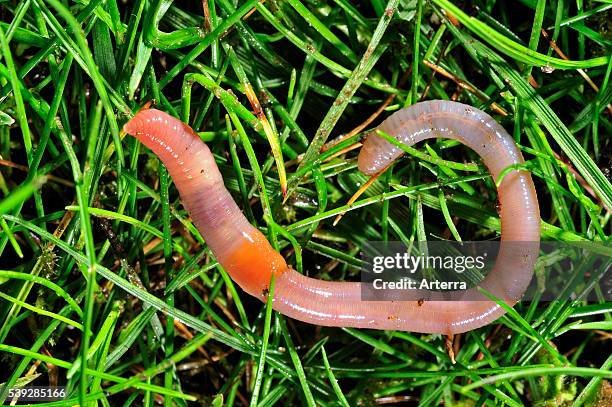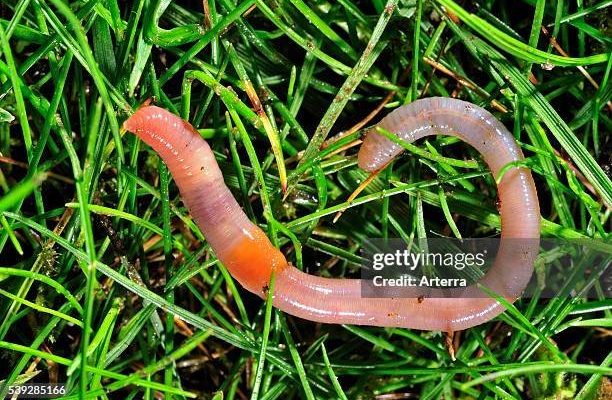
When it comes to earthworms, there’s a whole variety you might encounter in your backyard. Understanding the different types of earthworms not only helps you appreciate their role in your garden ecosystem but also aids in knowing how to care for them. So, let’s dive in and explore some of the most common types of earthworms found in gardens, and see how they make a difference.
1. Nightcrawlers: The Big Players
Nightcrawlers, often recognized by their long and thick bodies, are one of the most common types of earthworms gardeners will find. They typically dwell deeper in the soil, which allows them to aerate the earth effectively. You might be wondering why that matters. Well, when nightcrawlers burrow, they create tunnels that help rainwater and nutrients reach plant roots more easily. It’s like giving your garden a breath of fresh air!
These worms are particularly active at night, hence the name. They usually come to the surface during wet weather, making them easier to spot after a rainfall. Additionally, nightcrawlers are beneficial for composting. If you’re into composting, incorporating nightcrawlers can help break down organic matter efficiently, turning kitchen scraps into nutrient-rich humus.
Identifying Nightcrawlers
Nightcrawlers can be identified by their size—often growing up to 8-10 inches long! Their body is smooth and usually brown or reddish, which helps them blend into the environment.
2. Red Wigglers: The Compost Champions
Next up are the red wigglers, sometimes known as compost worms. These smaller, lighter-colored earthworms are often found in compost piles and are famous for their ability to break down organic material. Think of them as your garden’s recycling team!
Red wigglers thrive in rich, organic environments. If you’ve set up a compost bin, you might want to consider adding these little guys. They can consume their weight in food scraps every day, speeding up the composting process significantly. Plus, the castings (worm poop) they produce are packed with nutrients—making them a fantastic fertilizer for your plants.
Where to Find Red Wigglers
You’ll typically find red wigglers near the surface of the soil, especially in moist compost. They’re smaller than nightcrawlers, usually measuring about 2-4 inches in length, and have a distinct reddish hue that sets them apart.
3. Earthworms: The Garden Workhorses
When people think of garden earthworms, they often mean the common earthworm. This type is a real workhorse in your yard, helping to aerate the soil and improve its structure. These worms can be found in a variety of soil conditions, which makes them incredibly adaptable.
Common earthworms help in the breakdown of organic material in the soil. As they consume dead plant matter, they help create rich, fertile soil that your plants will love. They also play a critical role in nutrient cycling, helping plants absorb essential minerals.
Characteristics of Common Earthworms
Common earthworms can vary in size but usually range from 2-8 inches. Their bodies are segmented and have a more muted color compared to nightcrawlers, often appearing brown or gray.
4. Blue Worms: The Soil Enrichers
Another interesting type of earthworm you might encounter is the blue worm. As the name suggests, these worms have a somewhat bluish tint to their bodies. They’re not as popular in gardens but still contribute positively to soil health. Blue worms thrive in moist conditions and tend to live near the soil surface.
These worms are known for their ability to improve soil structure and promote plant growth. They help break down organic matter and are often found in damp, leafy environments. Adding blue worms into your garden can provide an extra boost, especially when it comes to soil fertility.
Identifying Blue Worms
Blue worms are smaller than both nightcrawlers and red wigglers, typically measuring around 3-5 inches. Their bluish body gives them a unique appearance, and they often thrive in areas with plenty of organic matter like compost piles.
5. Tiger Worms: The Speedy Decomposers
Tiger worms, with their distinctive striped appearance, are another type of earthworm that’s great for gardens. They’re especially known for their speed in breaking down organic materials. If you’re looking to speed up your composting efforts, these are the worms to consider!
Similar to red wigglers, tiger worms flourish in compost bins and make excellent decomposers. They have a high metabolism, meaning they work harder and faster in converting organic waste into nutrient-rich soil.
Characteristics of Tiger Worms
Tiger worms are medium-sized, usually around 3-5 inches long and have striking stripes along their bodies. Their name comes from these tiger-like markings, which help them stand out in the compost heap.
6. Benefits of Having Earthworms in Your Garden
So why does it matter which earthworms are in your garden? Understanding the types of earthworms can guide you in nurturing a vibrant ecosystem that promotes healthy plants. Here are a few benefits:
- Soil Aeration: Earthworms create tunnels in the soil, allowing air and water to penetrate deeper. This helps the roots of your plants breathe.
- Nutrient Enrichment: Their castings enrich the soil with essential nutrients, making them available to plants.
- Improved Drainage: The tunnels created by earthworms improve drainage, reducing the risk of waterlogged roots.
- Organic Waste Reduction: Earthworms help decompose organic matter, turning kitchen scraps and fallen leaves into valuable soil amendments.
Encouraging Earthworms in Your Garden
If you want to attract more earthworms, consider using organic gardening techniques. This includes avoiding chemical pesticides and fertilizers, which can harm these beneficial creatures. Instead, focus on adding organic material like compost or leaf litter to your soil to create a welcoming environment.
7. Common Problems with Earthworms
While earthworms do wonders for your garden, sometimes issues arise. You might notice fewer earthworms in your soil, and this could be due to poor soil health, excessive use of chemicals, or even low moisture levels.
Another common problem is overpopulation, which can lead to competition for resources. This often happens in compost bins where one specific type, like red wigglers, dominates. Ensuring a mix of different types of earthworms can create a balanced environment.
How to Troubleshoot Earthworm Issues
If you’re facing problems with your earthworm population, consider testing your soil for quality. You might want to amend it with organic matter and ensure it’s kept moist but not soggy. Also, make sure to create a diverse habitat, which can help keep your earthworms happy.
In closing, understanding the different types of earthworms commonly found in gardens can truly enhance your gardening experience. Each type brings its own strengths to the table, making your garden more vibrant and productive. By nurturing these natural allies, you’re not just planting seeds; you’re nurturing a thriving ecosystem. So next time you see an earthworm, remember that it’s doing important work right under your feet!

